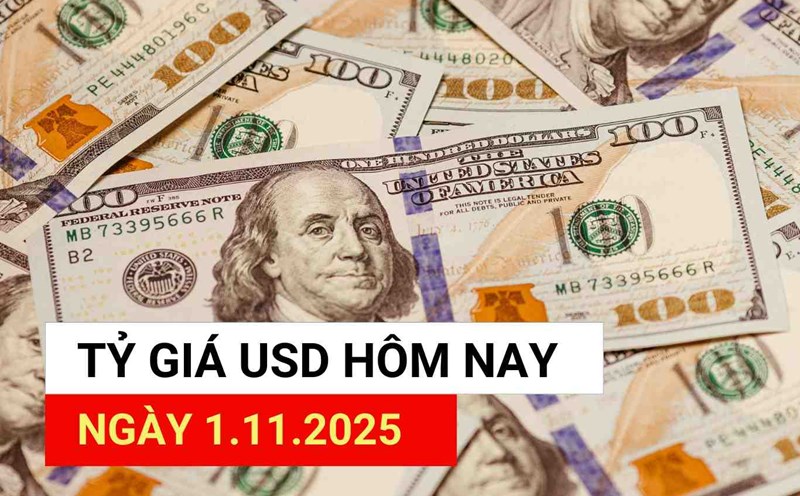Pressure from many sides
The domestic foreign exchange market has just experienced remarkable fluctuations when the gap between the free USD exchange rate and banks was pushed to the highest level since 2013. Although the pressure is showing signs of cooling down, the international context and domestic factors still contain many unknowns.
Recorded in the second half of October and the first day of November, the USD price on the free market was once trading at 27,800 - 27,850 VND/USD, while the selling price at commercial banks only fluctuated around 26,137 VND/USD.
This development parallels the international context, when the US dollar is fluctuating near its highest level in three months. Reuters's records on the morning of November 3 showed that global investors are still waiting for more US economic data to assess the position of the Federal Reserve (Fed). The Fed's strong stance has supported the USD's strong appreciation, putting pressure on most other currencies, including the VND.
Regarding domestic factors, exchange rate pressure also comes from the psychology of foreign exchange reserves and the increased demand for USD when importing production materials recovers. In addition, the large gap between domestic and international gold prices is also said to have boosted demand for USD in the free market.
Faced with this pressure, the State Bank of Vietnam (SBV) had to take interveneous action. In the session on October 22, 2025, this agency sold foreign currency for a term (with sideways cancellation) with an estimated implementation volume of 1.5 billion USD to stabilize the market.
Potential risks of inflation
Discussing this issue, Dr. Pham Duc Anh, Deputy Head of the Department of Scientific Research and Consulting, Institute of Banking Science Research ( banking Academy), said that the current exchange rate increase pressure has not had a clear impact on the Government's inflation control goal.
"The reason is that the energy price level, especially gasoline, is still maintained at a low level," Dr. Duc Anh explained.
However, he also emphasized that this is still a potential risk factor that needs to be closely monitored. "The exchange rate could spread to import prices, transportation and production costs in the coming months," he warned.

To resolve this risk, Dr. Pham Duc Anh said that close coordination between monetary policy and fiscal policy is very important.
Accordingly, the State Bank needs to stabilize the exchange rate within a reasonable range, flexibly regulating through foreign currency trading channels. At the same time, fiscal policy should continue to stabilize energy prices, control logistics costs and monitor essential goods prices.
"If the two policies are coordinated smoothly, Vietnam can completely maintain the inflation target of 44.5% while still supporting economic growth," he affirmed.
USD exchange rate forecast
Providing a forecast of the trend from now until early 2026, Dr. Pham Duc Anh commented that the USD/VND exchange rate is likely to cool down gradually in the last months of 2025, but will continue to remain high.
According to him, the market expects the Fed to cut interest rates by 1-2 more times in the fourth quarter of 2025. If this scenario occurs, the USD will weaken, helping to reduce pressure on the VND exchange rate and the exchange rate may be more stable in the first half of 2026.
Regarding domestic factors, positive signals for foreign currency supply are appearing. The trade surplus in the first 9 months of the year reached about 16.8 billion USD and the hoiine flow is forecast to increase sharply in the fourth quarter.
However, this expert also noted that the balance of total payments (BOP) in the last two quarters showed that the pressure on capital flows and the demand for imported production materials was still large. This makes the actual supply of foreign currency not too abundant.
"Therefore, from now until early 2026, the USD/VND exchange rate is expected to gradually decrease pressure but it will be difficult to return to the previous low. The stability of the overall balance of payments and the flexible management policy of the SBV will be a key factor to stabilize the foreign exchange market" - Dr. Duc Anh concluded.











